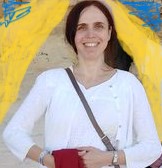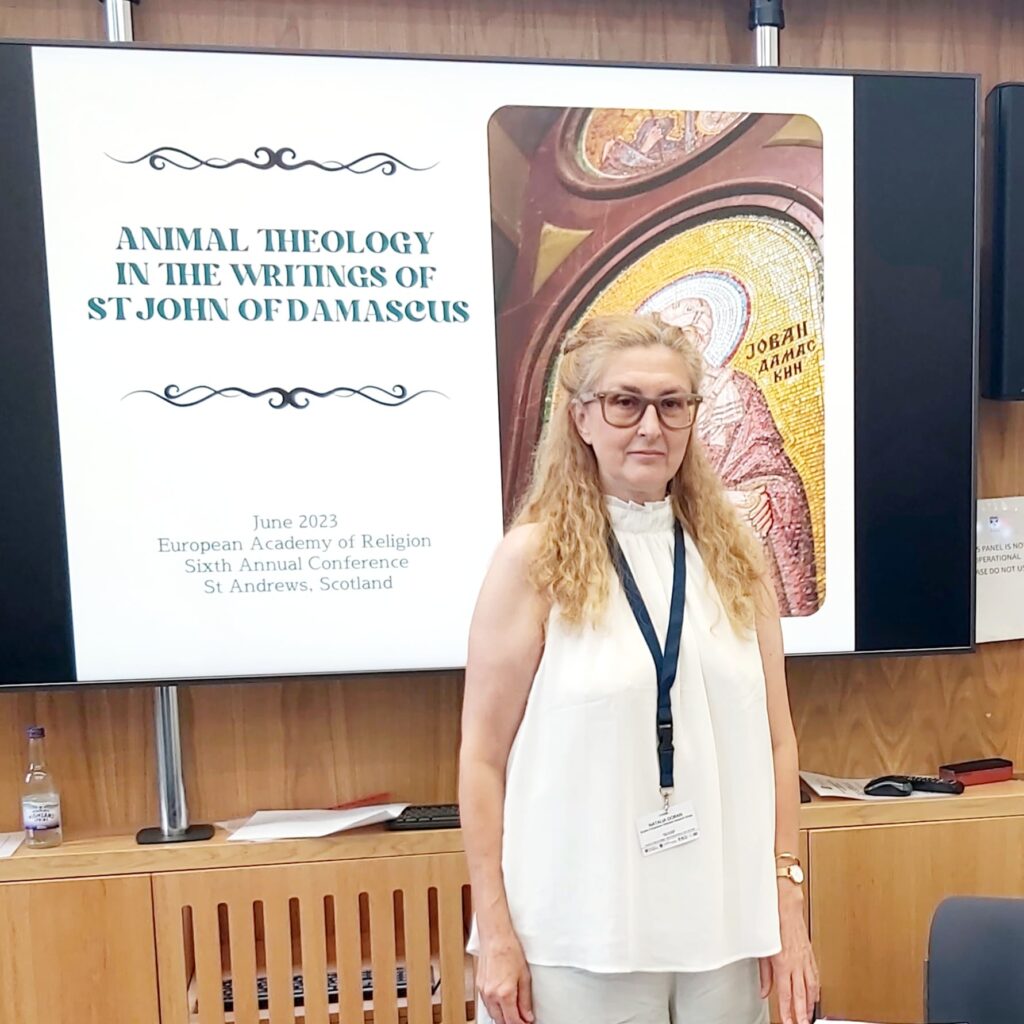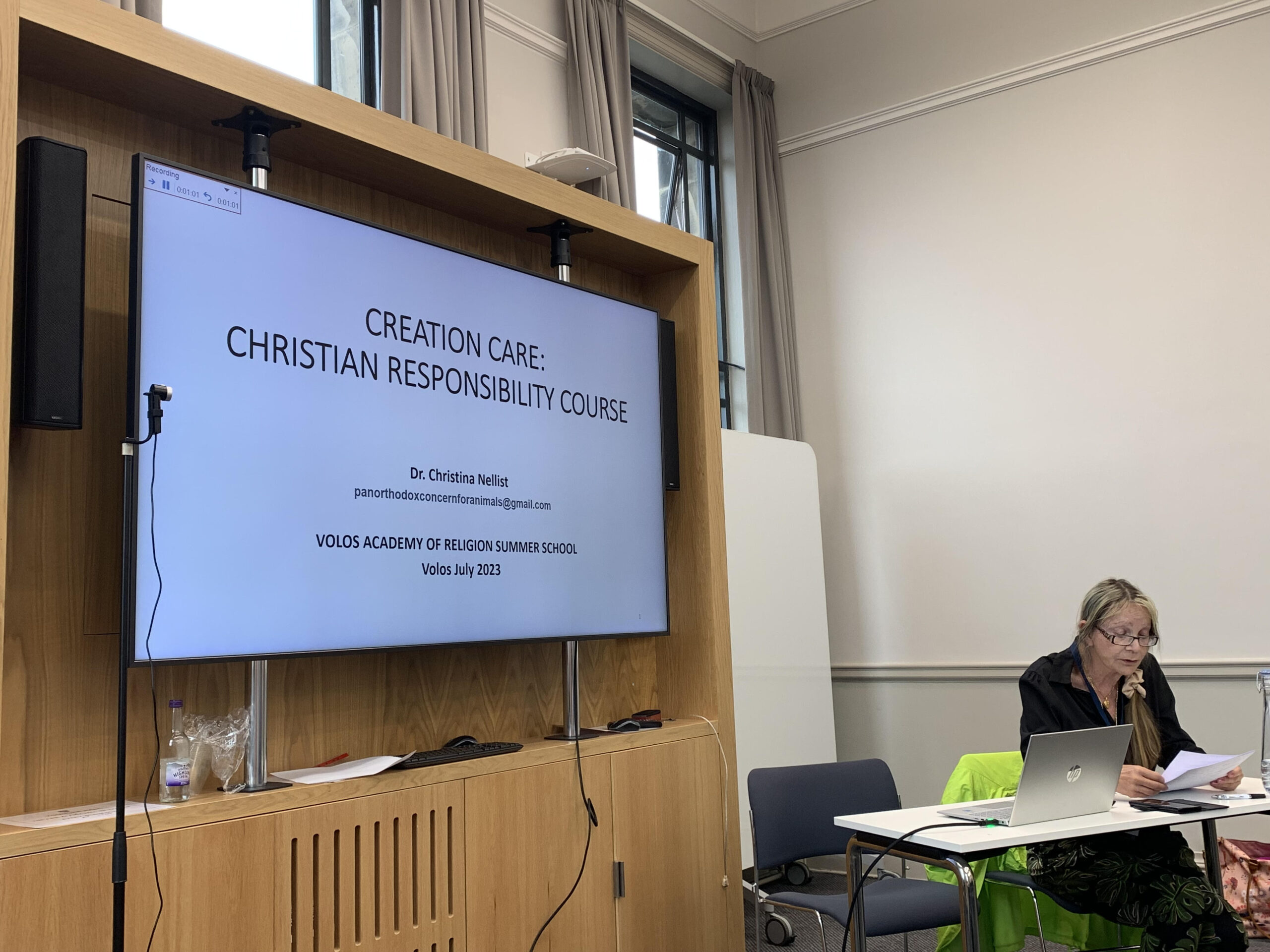Creation Care Christian Responsibility Session
St Andrews University, St Andrews, Scotland. June 2023
At the end of June, the Pan Orthodox Concern for Animals Charity ran a session entitled ‘Creation Care Christian Responsibility’ at the European Academy of Religion’s conference at St Andrews University in St Andrews, Scotland. It was a session full of interesting presentations from three Orthodox theologians and philosophers and one Catholic theologian, who took the place of Fr Simon who had recently died, and we are grateful to her, both for her willingness to engage with us and for her valuable contribution.

Eastern Orthodox theologian Dr. Olga Sevastyanova opened the ‘Creation Care Christian Responsibility’ session with her excellent paper entitled The Breath of God in Creation. Her paper explored the three scriptural Hebrew terms נֶפֶשׁ (nephesh), נְשָׁמָה (neshama) and ר֣וּחַ (ruah) rendered into English as soul, breath, or spirit. Dr Olga demonstrate that in the Scriptures, there is no clear distinction between God’s immortal breath /spirit (neshama/ruah) and the breath/spirit (neshama/ruah) within creatures. The whole of creation participates in the life of God by the very fact of its living. It is always God who animates the creatures, both physically and spiritually. She brought attention to the fact that the breath of life (nishmat hayyim), breathed into the human nostrils at Creation according to Genesis 2:7, does not constitute the difference between humans and other creatures. Both animals and humans are animated by God’s breath. She explained that this raises the question about the place of animals within Orthodox Theology. Where does the sharp theological distinction between the animal world and the human come from? For what reasons did Orthodox theology displace animals from participation in God? Her paper interrogated these questions using the theology of St. Gregory of Nyssa.

Eastern Orthodox philosopher Natalia Doran (above) then gave her presentation entitled Animal theology in the writings of St John of Damascus. Natalia explained that as someone who wrote the nearest to a summa theologica that the Christian East possesses, St John of Damascus can be relied upon to provide a sophisticated and consistent conceptual framework within which a variety of issues, including issues to do with animals, can be discussed. She explained that the terms that are of particular interest are nature and hypostasis. While it is generally accepted that there will be some type of animal life in the ‘Age to Come’, it is by no means certain that it will be the same animals whom we know and love here, in this space and time continuum. However, following the logic of the ontological priority of the hypostasis that St John adheres to in his exposition of the Orthodox faith, she argued that, since creation is fundamentally particular, it will be animal individuals (hypostases, or persons) who will share eternity with such of us who are worthy of it.

The third member of our team was the Catholic theologian and founder of the Animal Interfaith Alliance, Barbara Gardner, who gave her presentation on The Golden Rule and Compassion for All Beings. She explained that she was representing the Animal Interfaith Alliance (AIA), which is a unique alliance of faith-based animal advocacy organisations which represents the major faiths, and focuses on what we have in common and on what unites us, rather than what differentiates us. We recognise that the Golden Rule, “to treat others as you would wish to be treated yourself” is common amongst all faiths and traditions, dating back millennia. We also recognise that all faiths and traditions have included animals in their definition of “others” in the Golden Rule. She reminded us that sadly, many of the followers of those faiths and traditions today, and for hundreds of years in the past, have forgotten that the rule applies to all sentient beings – beings who can feel pain and suffer, and who can experience pleasure and happiness. In our ever more human-centric world, animals have become excluded from our circle of compassion. They have become reduced to mere commodities for our use, with little or no regard for their complex emotional, social and spiritual lives. She went on to explain that the AIA aims to educate people on the original teachings of their faiths and to reinstate the fundamental principle that we must extend our circle of compassion to include all conscious, sentient beings, and that we must extend to them also, the golden rule and treat them as we would wish to be treated ourselves. All member groups believe in a lifestyle which does not harm others. Animals are sentient beings who have the right to live freely and not to be made to suffer by humans and exist for their own sakes and not for ours. We believe that we are part of an interconnected web which includes the Earth and all its inhabitants, both plant and animals. By abusing part of that web, we damage the rest of it, including the environment and ourselves.

Finally, Eastern Orthodox theologian and Chair of the session, Dr Christina Nellist gave an outline of one of her forthcoming sessions at the Volos Academy of Theology in Greece, entitled The Creation Care Christian Responsibility Course. She explained that this course, originally written for an Orthodox audience, is easily adapted for use by other Christian denominations. It is for use in Christian parishes, youth groups, seminary institutions or for individual study. It may also provide a useful framework for homilies. The course, consisting of eight lessons, establishes that concern and compassion for animals is not a modern phenomenon, but one found both in the Bible and in the earliest teachings of the Christian Church. It provides an anamnesis of a lesser-known Christian tradition, where all animals are loved and protected by God and that their suffering is against God’s will. It reminds us that in our role as Image, we should strive to reflect the Archetype in our lives. At times, it also highlights the soteriological implications of our abuse and exploitation of God’s non-human animal beings and the wider creation. It reminds us that by causing harm to animals or by our indifference to it, human salvation is in jeopardy. It is written to facilitate Christian Church engagement with the subjects of animal suffering and climate change, which, though separate subjects, are deeply interconnected.
